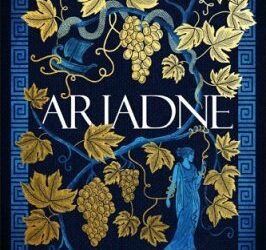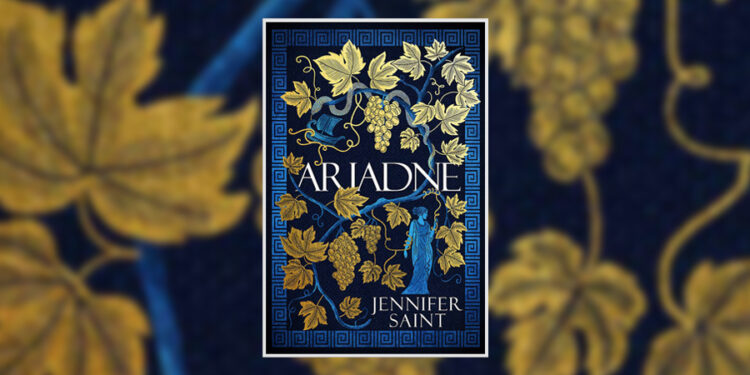Introduction
Ariadne Summary And Themes By Jennifer Saint Jennifer Saint’s Ariadne is a feminist retelling of the ancient Greek myth of Theseus and the Minotaur, placing the titular character, Ariadne, at the heart of the story. The novel reimagines Ariadne’s life and choices, exploring themes of love, betrayal, sisterhood, and agency in a patriarchal world.
Saint’s lyrical prose breathes new life into the myth, offering an intimate portrait of a woman often overshadowed by the heroic exploits of men. The novel is not merely a retelling; it is a reclamation, highlighting the silenced voices of women in Greek mythology. This article delves into the narrative and themes of Ariadne while addressing some of the frequently asked questions about this modern classic.
Summary of the Novel
Ariadne unfolds across several key stages of the protagonist’s life, from her time in Crete to her eventual fate on the island of Naxos. The story is narrated primarily by Ariadne, with occasional interjections from her sister, Phaedra, adding depth to their shared experiences and contrasting perspectives.

1. Life in Crete: The Labyrinth and the Minotaur
Ariadne is introduced as the daughter of King Minos of Crete and Queen Pasiphae. Her family is deeply entwined with the gods, and her mother’s union with a divine bull has resulted in the birth of the Minotaur, a monstrous half-man, half-bull creature. Despite her royal upbringing, Ariadne feels trapped in the shadow of her family’s infamy and the relentless demands of the gods.
Read more
Every year, as a form of tribute, Athens sends fourteen youths to be sacrificed to the Minotaur. Ariadne is haunted by the suffering of these victims and her role as the king’s daughter in perpetuating this cycle of violence.
When the Athenian prince Theseus arrives in Crete as one of the sacrificial youths, he resolves to kill the Minotaur. Ariadne, captivated by his bravery and charm, helps him navigate the labyrinth by giving him a ball of thread to retrace his steps. Theseus succeeds in slaying the Minotaur, and Ariadne flees Crete with him, believing she has found a partner who values her courage and intelligence.
2. Betrayal on Naxos
Ariadne’s elation is short-lived. Theseus abandons her on the island of Naxos, leaving her heartbroken and questioning her worth. Stranded and alone, Ariadne begins to rebuild her life, finding solace in the natural beauty of the island and the companionship of Dionysus, the god of wine.
Dionysus offers Ariadne a vision of love and partnership that contrasts sharply with Theseus’s betrayal. He respects her autonomy and shares his divine world with her, allowing her to rediscover her strength and agency.
3. Phaedra’s Story: The Palace of Athens
Parallel to Ariadne’s narrative is the story of her younger sister, Phaedra, who marries Theseus and becomes the queen of Athens. Through Phaedra’s eyes, we see the harsh realities of palace life and Theseus’s flawed character. Phaedra struggles to assert her own identity and navigate the challenges of being a woman in a patriarchal society.
Her story takes a tragic turn as her unfulfilled desires and isolation lead to a fateful encounter with Hippolytus, Theseus’s son from a previous union. This subplot underscores the destructive consequences of unchecked power and societal constraints on women.
4. Triumph and Tragedy: Ariadne’s Legacy
Ariadne’s life with Dionysus brings moments of joy and fulfillment. Together, they have children and preside over Naxos, transforming the island into a sanctuary of art, celebration, and divine worship. However, the gods’ interference and the weight of immortality eventually cast a shadow over their happiness.
The novel’s conclusion reflects the cyclical nature of tragedy and triumph in Greek mythology. Ariadne’s legacy endures as a testament to her resilience, even as her story underscores the cost of living in a world shaped by the whims of gods and men.
Themes in Ariadne
1. Feminist Reclamation of Myth
Jennifer Saint reclaims the story of Ariadne, giving her a voice and agency often denied in traditional tellings. The novel critiques the glorification of male heroes like Theseus, revealing the harm they inflict on women in their pursuit of power and fame.
Read more
2. Love and Betrayal
The novel explores the complexities of love, from Ariadne’s idealistic devotion to Theseus to her mature relationship with Dionysus. Theseus’s betrayal serves as a turning point, highlighting the fragility of trust and the pain of abandonment. Ariadne Summary And Themes By Jennifer Saint
3. Sisterhood
Ariadne and Phaedra’s bond is central to the narrative. Despite their differing paths, their shared experiences of oppression and resilience create a poignant commentary on the strength of sisterhood in the face of adversity.
4. Agency and Autonomy
Ariadne’s journey is one of self-discovery and empowerment. Her decision to aid Theseus, her survival after his betrayal, and her relationship with Dionysus all reflect her growing assertion of autonomy.
5. The Role of the Gods
The gods in Ariadne are capricious and often cruel, embodying the unpredictability of fate. Their influence shapes the lives of mortals, forcing characters like Ariadne to navigate the delicate balance between divine will and personal choice. Ariadne Summary And Themes By Jennifer Saint
6. Tragedy and Resilience
True to its mythological roots, the novel embraces the inevitability of tragedy while celebrating the resilience of its characters. Ariadne’s ability to find meaning and joy despite her hardships underscores the enduring human spirit. Ariadne Summary And Themes By Jennifer Saint

Conclusion
Jennifer Saint’s Ariadne is a powerful and evocative reimagining of a classic myth. By focusing on Ariadne’s perspective, the novel sheds light on the experiences of women in ancient stories, reclaiming their voices and exploring their struggles and triumphs. Ariadne Summary And Themes By Jennifer Saint
Through its rich prose and nuanced characters, Ariadne invites readers to reflect on themes of love, betrayal, agency, and resilience. Whether you are a fan of mythology or a newcomer to the genre, this novel offers a compelling and thought-provoking journey into the heart of an ancient tale, made timeless by its modern sensibilities. Ariadne Summary And Themes By Jennifer Saint
Read more
FAQ
1. How does the novel differ from the original myth?
While the original myth focuses on Theseus and his heroics, Ariadne shifts the perspective to Ariadne and Phaedra. Saint delves into their inner lives, giving them depth and complexity that traditional retellings often lack.
2. Is Ariadne suitable for readers unfamiliar with Greek mythology?
Yes. Saint provides enough context for readers to follow the story without prior knowledge of Greek mythology. The novel serves as both an introduction to the myth and a standalone narrative.
3. How does the novel portray Theseus?
Theseus is depicted as a flawed and self-serving character, contrasting with the idealized hero of traditional myths. His betrayal of Ariadne and mistreatment of Phaedra reveal his moral shortcomings.
4. What is the significance of Dionysus in the novel?
Dionysus represents a more complex and compassionate form of divinity. His relationship with Ariadne challenges traditional power dynamics and offers a vision of partnership based on mutual respect.
5. What role does Phaedra play in the story?
Phaedra serves as a foil to Ariadne, highlighting the different paths available to women in their society. Her tragic arc underscores the dangers of isolation and repression.
6. What lessons can readers take from Ariadne?
The novel emphasizes the importance of resilience, self-discovery, and challenging societal norms. It also encourages readers to question traditional narratives and seek out untold perspectives.
7. How does the novel address themes of power and patriarchy?
Saint critiques the patriarchal structures of ancient Greece by showing their impact on women like Ariadne and Phaedra. The novel highlights the courage required to resist these systems and assert one’s individuality.
8. Why is the novel considered a feminist retelling?
Ariadne re-centers the narrative around female characters, exploring their thoughts, emotions, and struggles in depth. It challenges the traditional glorification of male heroes and emphasizes women’s agency.
Read more

















